Abstract 11/12/2019
Table of content
Tomasz Kwarciński – Importance of self-government voivodships in the development of regional passenger transport in Poland
Michał Wójtowicz – Pictogram as an information carrier in the public transport
Szymon Oleksiuk – Public Transport Management Subsystem as a part of the Intelligent Transport System (ITS) in Bielsko-Biała
Bryniarska Zofia, Szczygieł Aneta – Analysis of passenger aircrafts punctuality at the John Paul II International Airport Krakow-Balice Ltd. Maria Zych-Lewandowska – Special public transport lines during All Saints’ Day in Poland
Abstracts
Tomasz Kwarciński
Importance of self-government voivodships in the development of regional passenger transport in Poland
Abstract: The article presents the importance of self-government voivodeships in the development of regional passenger transport in Poland. Delegating responsibility for organization and financing regional rail transport to the regional authorities has been a process that had been preceded by restructuring of the PKP (Polish State Railways company) and introduction of a new administrative division of the country. Particular attention was paid to issues related to the organization and financing of regional passenger transport in Poland. In this respect, important tasks of local authorities (self-government voivodships) are: influencing the timetable, co-financing of public transport services, purchase of new/upgraded rolling stock, as well as modernization of line and point infrastructure of railway transport. Growing expenditures of regional self-governments on the regional railway transport in Poland is a reflection of the increasing their role in the process of delegating of responsibility of regional railway transport in Poland.
Key words: passenger transport, rail transport, regional rail transport
Michał Wójtowicz
Pictogram as an information carrier in the public transport
Abstract: The goal of the article is to prove that the pictogram is not only a picture that provides simple information and to draw an attention to the complexity of problems associated with its location in the reality that surrounds us. The history of this type of information is presented in the historical approach – as the information given in the simplest possible way which is not limited by the language or nationality context. The evolution of pictorial information was presented on the example of images of hazardous chemicals. The need to maintain consistency in the transmission of information between the object and external environment has been demonstrated. In addition, an example of one simple pictogram and a multitude of variations presenting the same content are described. Solutions used in public transport – both domestic and European – have also presented. The legal basis for the use of specific markings and specific solutions applied in public transport practice have been presented. The last part of the article indicates the desired development directions for the picture passenger information. Important concepts such as noise data and visual noise have been discussed. Postulates regarding the minimization of transmitted information and its standardization on a macro scale were defined.
Key words: passenger transport, urban public transport, information, pictogram
Szymon Oleksiuk
Public Transport Management Subsystem as a part of the Intelligent Transport System (ITS) in Bielsko-Biała
Abstract: The article aims to present the implementation mechanisms of the ITS system in Bielsko-Biała, in the framework of the project implemented in 2017-2018. The city carried out the first stage of key activities, using telematics – to automate tasks related to the operation of transport systems, in particular in the field of public transport. The scope of application of Intelligent Transport Systems to improve traffic flow and increase efficiency of public transport as well as logical architecture of the system and functions of the system have been presented. In addition, characteristics of the Public Transport Management Subsystem, technologies enabling its operation, as well as the process of implementing the priority function for public transport vehicles and solutions in the area of passenger information have been discussed.
Key words: passenger transport, public transport, intelligent transport systems (ITS)
Bryniarska Zofia, Szczygieł Aneta Analysis of passenger aircrafts punctuality at the John Paul II International Airport Krakow-Balice Ltd.
Abstract: From the passengers’ point of view, punctuality is one of the most important quality features. In air transport, the performance of operations by planes and their ground handling are much more time-consuming, and also heavily dependent on weather conditions. The purpose of the article is to conduct punctuality analysis, determine the structure and size of punctuality deviations as well as delays and accelerations of passenger flights performed at the John Paul II International Airport Krakow-Balice. The article presents not only basic information about the International Airport in Balice but its history and volume of air traffic in recent years as well. The most common causes of delays and delay codes developed by the International Air Transport Association have been discussed. Measures and indicators of punctuality have been defined. The structure of punctuality deviations and the assessment of statistical location measurements and variability of deviations from punctuality, accelerations and delays of flights for a period of 12 months have been presented. Flight punctuality analysis has been conducted in division to national and international flights in this period and for two selected months of the year breakdown by days. The summary presents the final conclusions of the punctuality analysis of passenger aircrafts and describes the most common causes of delays occurring at the John Paul II International Airport Kraków-Balice along with the way to eliminate them.
Key words: air transport, punctuality, delays, deviation of punctuality
Maria Zych-Lewandowska Special public transport lines during All Saints’ Day in Poland
Abstract: The article presents in detail solutions of municipal public transport management in Poland during the All Saints’ Days. Data from the “cemetery operation” in 2015 for Bydgoszcz, Gdańsk, Kraków, Lublin, Łódź, Poznań, Rzeszów, Toruń, Warsaw and Wrocław have been presented. Special lines launched to handle increased passenger traffic to and from cemeteries, developments on regular lines, tariff and rolling stock changes, schedules and route modifications, as well as a number of specific solutions applied in selected cities have been discussed. A synthetic combination of so-called good practices that will help organizers of urban transport in Poland to improve quality of services offered during these specific days for public transport.
Key words: public transport, passenger transport, special lines, passenger transport services on cemeteries

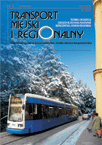 SITK RP
SITK RP 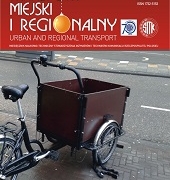
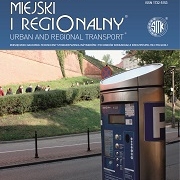 Wydawnictwa SITK RP
Wydawnictwa SITK RP 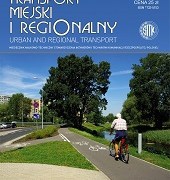
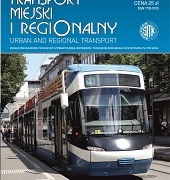
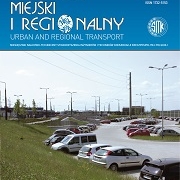 SITK RP
SITK RP 

